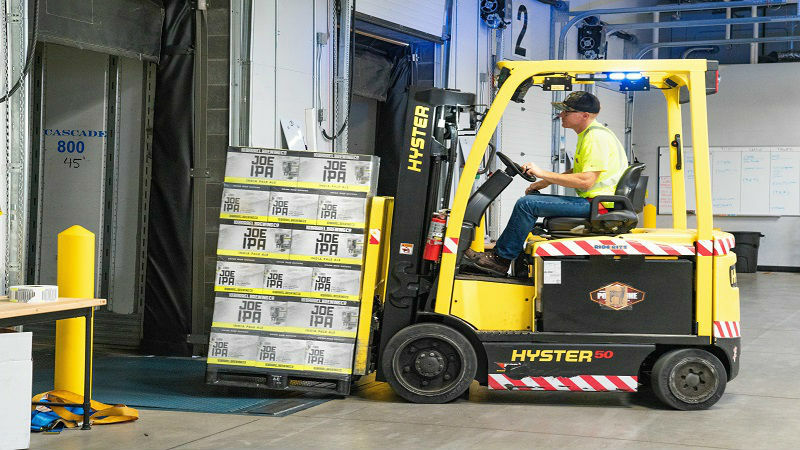Understanding Your Organization’s AI Maturity: A Roadmap to Transformation


Fierce competition and an ever-rising number of stringent and complex environmental, health and safety (EHS) regulations, means ensuring a safe workplace is becoming increasingly challenging. Hence the critical importance of an effective workplace safety program. While every organization is leveraging its safety program to varying degrees of success, the reality is some are more successful than others.
Recently I compiled a list of the strategies that are making waves for all the right reasons. I give a full and comprehensive account of all these strategies in Safeguarding Your Organization: Lessons Learned from the Field. In this blog post, I want to take a close look at how one organization implemented one of these strategies, and by developing a razor-sharp focus on risk and governance, strengthened its safety program.
Why it’s time to talk about SIF over LTI rates
In this situation, the customer, a multinational pharmaceuticals company, decided to refresh the way it looked at their safety-related information. Traditionally, they took a benchmarking approach to risk and governance that focused on tracking the lost-time incident (LTI) rates. However, the company’s research showed that despite progress on the workplace safety front, serious incident and fatality (SIF) rates remained consistent.
HR leaders needed to try something new. They decided to focus on SIF rates instead. This new approach involved introducing a new KPI— “potential SIFs”—into its risk and governance program. To accomplish this, they began by analyzing all reported accidents and incidents, to see whether a relatively minor accident or incident could have turned into a SIF if conditions had changed. They also continually run accident and incident data to identify potential SIFs. Once these are pinpointed, they will, if applicable, implement targeted learning to address the situation at the relevant work site.
The company also launched an EHS leadership training program. Delivered over a three-year timeline, it reinforced the focus on SIF rates.
Year 1: Deep knowledge
The first year was all about strengthening leadership knowledge of EHS regulations and priorities—particularly the importance of reducing SIF rates. To reinforce the message, the trainers personalized the topic of safety. They asked each leader to document one or two safety commitments they make, for example, ensuring that they can return home to their families after work.
During this phase, participants also completed a study of cognitive biases in perceptions of job risk. The group learned that people who routinely perform highly dangerous jobs (like electrical linemen) often underestimate the risks in their work because they’ve done it every day for a long time. As a result, they can get dangerously complacent about safety.
Year 2: New behaviors on the shop floor
During this time, participants learned to change their approach in promoting workplace safety, particularly while conducting EHS inspections or safety walks in their facilities. Leaders moved the emphasis of their conversations with equipment operators and other personnel from a discussion around risk topics to a focus on where those actual risks could occur. For example, instead of merely asking about slips, trips, and falls during shop-floor conversations, leaders would focus on essential factors contributing to SIF rates—such as flaws in shields and other devices covering hazardous areas of manufacturing equipment. By demonstrating new behaviors and safety practices on the job, business leaders can provide real-time, tangible safety measures. These can inspire managers and employees to adopt new, safety-oriented behaviors themselves and encourages them to offer ideas for further enhancing safety at their locations. Indeed, EHS professionals within the company acknowledged that while they know what the regulations are and what the company must do to comply, people performing the actual work know best how to do the work and where the worst risks lie. Therefore, involving business leaders within the company continues to be an essential part of shaping safety culture.
Year 3: Smarter decision-making
Leaders focused on making more informed EHS decisions, drawing on insights gained from their business operations and guidance from the company’s EHS experts. As part of this effort, leaders learned how specific decisions and changes could contribute to the business’s bottom line. For instance, safety-related decisions that lowered costs and boosted productivity in the workforce would translate directly into higher profitability for the company. This awareness further enhanced business leaders’ sense of empowerment—their ability to make a positive impact on the whole organization, versus merely following safety mandates handed down from top management.
When you consider that 5,147 workers died on the job in 2017, an average of 14 deaths every day, the issue of workplace safety takes on a new meaning. I believe that most companies do want to protect their employees as best they can, and implanting a workplace safety program that achieves this is critical.

Norm Ford is VP of Operations for Compliance Solutions at Skillsoft.
We will email when we make a new post in your interest area.

